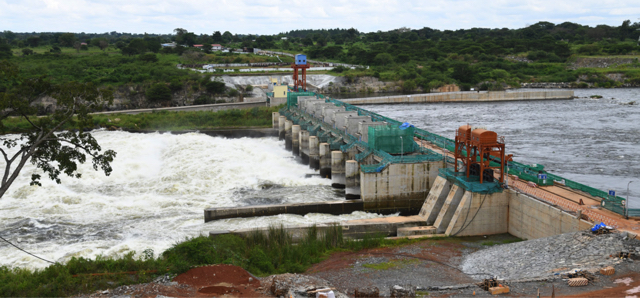
Uganda is paying billions in energy generated but not evacuated, and by 2022, at least sh1.4 trillion had been paid out to 13 generation companies over 15 years for power not used, according to the Auditor General
Gulu, Uganda | THE INDEPENDENT | Uganda’s electricity production capacity has increased to more than 1,600 megawatts, which is double the demand. This follows the addition of power from Karuma and other smaller plants, according to the Ministry of Energy and Mineral Development.
The plant has so far added 300 megawatts to the national grid, with the other expected to be fully-added by August 2024. Eng. David, the Assistant Commissioner Energy Efficiency and Conservation Department says the commissioning of Karuma has been pushed back from August this year by another year, when all the units will be ready for switch-on.
With the installed capacity reaching 2,000 megawatts then, he says there is a need for increased efforts in ensuring higher demand for electricity.
Uganda is paying billions of Shillings in energy generated but not evacuated, and by 2022, at least 1.4 trillion Shillings had been paid out to 13 generation companies over 15 years for power not used, according to the Auditor General.
However, the government has announced that it has scrapped the system dubbed ‘take-or-pay’ which had been credited for the high investments in the sector but was costing the public dozens of billions of Shillings per year.
Birimumaaso admitted that one of the challenges to increasing the demand was the high cost of electricity, with, for example, households paying about 750 Shillings per kilowatt hour (20 US cents). Speaking ahead of the forthcoming first Power & Elec Expo Uganda next week, Birimumaaso said it was challenging meeting the demands for lower cost of electricity at the same time having to allow the investors to recoup their capital.
The expo, is an international event organized by Mumbai-based Exhibitions & Trade Services India Private Limited, in partnership with the Ministry of Energy and Mineral Development. The expo is aimed at exposing Uganda to new innovations in the energy sector, as many exhibitors are expected from the more developed countries, including generators, vendors, financiers, and equipment suppliers, according to Vijayanka Brighuvanshi, the company’s director.
Currently, the number of connections has slightly risen since last year to about 1.9 million, according to the ministry, while access now stands at 20 percent, up from 18 percent last year.
Eng. Birimumaaso says the number is expected to grow to more than 2.9 million at the end of the five-year electricity connection scale-up project that starts this year.
The increase in connections over the last two years has been helped by the resumption of free connections under the Electricity Connections Policy of the government that had been suspended in 2020 due to the lack of resources.
The project resumed after the government secured a 600 million-dollar loan. The ministry has since introduced a ‘hybrid’ scheme where a customer is only required to make a down payment of 200,000 Shillings, the cost for the inspection of the house wiring, and the initial units of electricity.
The balance of the Shillings 720,000 is paid along with the payment for units within 8 years. Apart from the high costs, Birimumaaso says the extension of electricity, the reduction in the tariff, and the stabilization of supply are being challenged by, among others, vandalism of the infrastructure, the aging equipment, and the difficulties in acquitting the right of way.
****
URN
 The Independent Uganda: You get the Truth we Pay the Price
The Independent Uganda: You get the Truth we Pay the Price



And then why is there still loadshedding? This is a gimmick